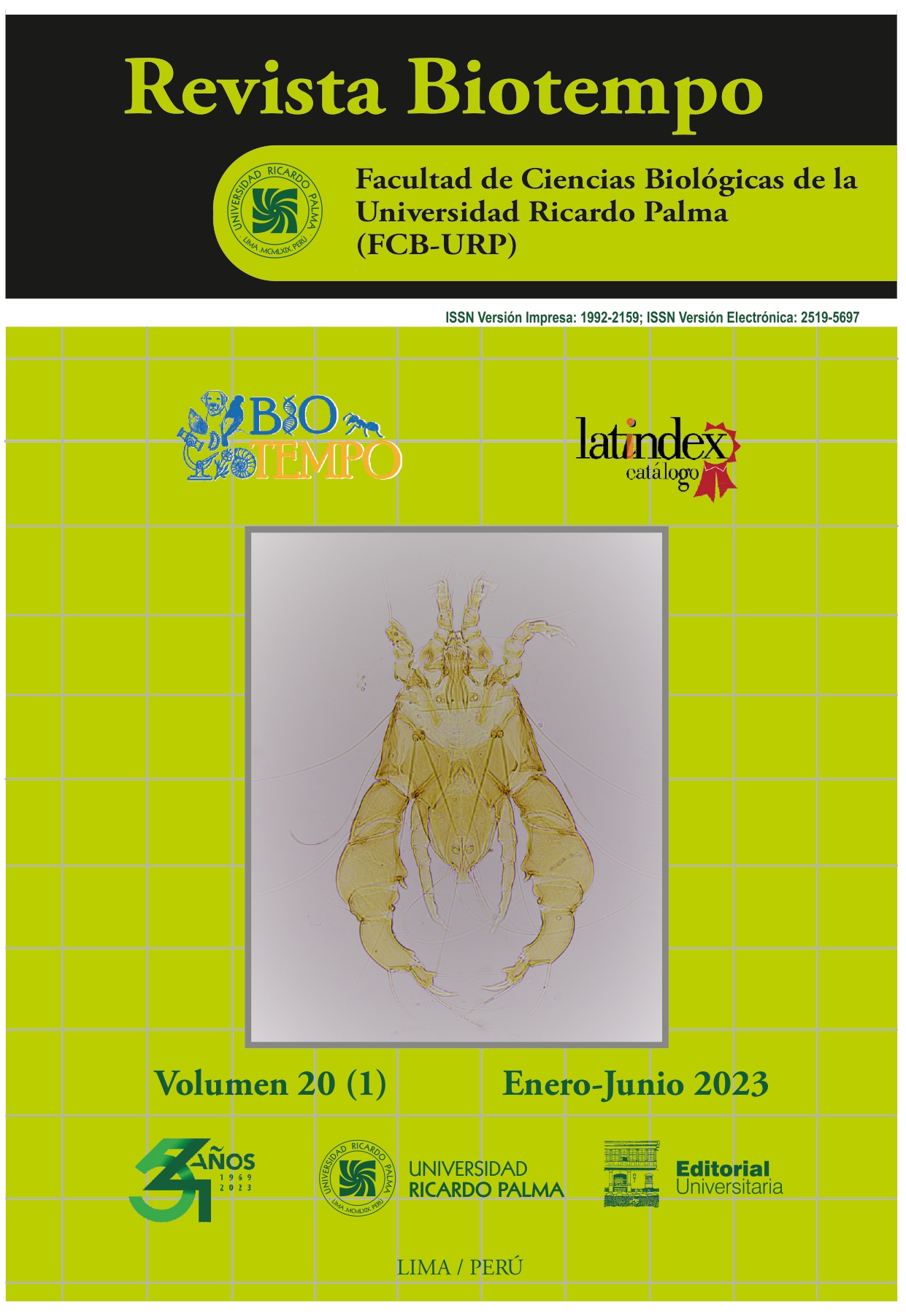Morphological and morphometric analysis of Hippocampus ingens Girard, 1858 “sea horse” in a state dehydration
DOI:
https://doi.org/10.31381/biotempo.v20i1.5647Keywords:
CITES, conservation, IUCN, morphology, morphometry, SDGAbstract
This research analyzes a population of 1760 Hippocampus ingens Girard, 1858 dehydrated “seahorses”, from confiscation of illegal fishing in the north of the country from a Chinese vessel in 2016 and donated to the Ricardo Palma University, Lima. Peru by the Ministry of Production (PRODUCE) of Peru according to delivery certificate No. 06-005565-2016, for research purposes. The morphological characteristics were analyzed and the morphometric parameters of this species were established. The sexual dimorphism ratio (1:1,32) was determined based on morphological characteristics such as
the presence of an incubation pouch in males and its absence in females. Through the Pearson correlation analysis, it was established that there is a direct proportionality between the weight that fluctuated between 0.53 and 5.37 g and the capture size between 56 and 219 mm, while the number of rings was established at 11 as an average in the trunk and
tail range was from 31 to 41, observing a relationship between them. When making comparisons of the morphometric values, it was shown that the total length is independent of gender, so the differences between males and females were not signifi cant. It is considered that the seahorses were captured and dehydrated before reaching their maximum development. The overexploitation and demand for this resource make them vulnerable to depredation by illegal fishing, (VU) by the International Union for Conservation of Nature (IUCN) and Appendix II in the Convention on International Trade in Endangered Species of Fauna and Wild Flora (CITES), declaring itself permanently closed. It is expected that this
research will generate alternative solutions for its conservation such as the development of aquaculture and, knowing the population structure, predict its viability in the future to improve conservation efforts for this threatened species,
fulfilling Sustainable Development Goal 14. (SDG) “Submarine life”.










